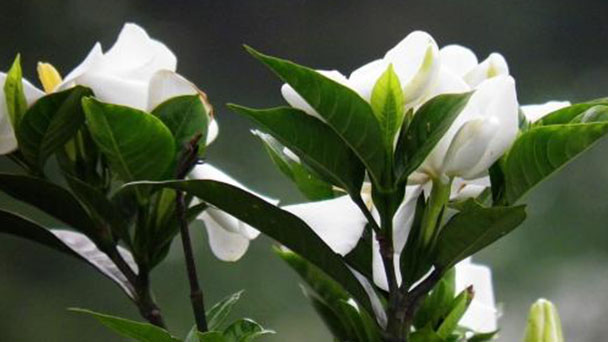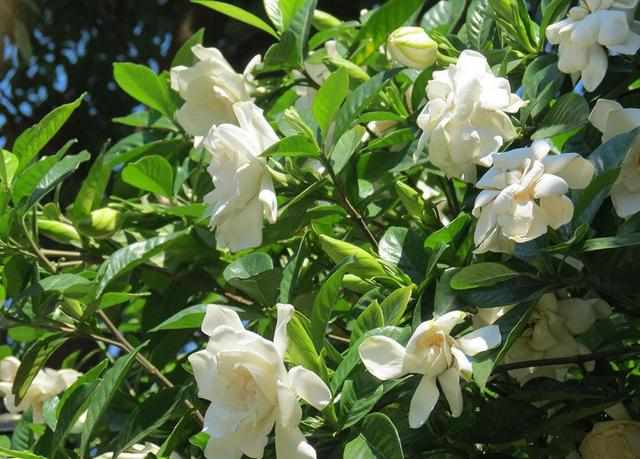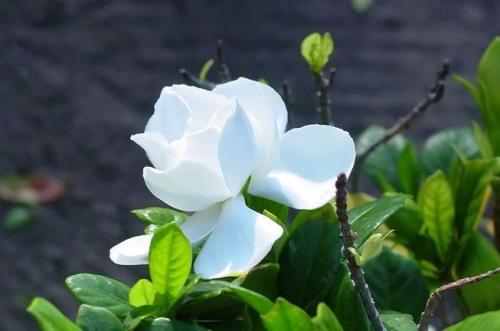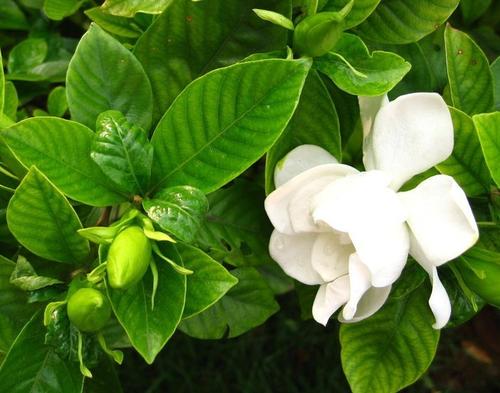Growing Cape Jasmine care
Written by Maggie
Oct 13 2021

Cape Jasmine can be grown on hedges, in gardens, yards, or in pots. How to grow and care for Cape Jasmine? Here are some caring tips.

Cape Jasmine care for buds falling
Cape Jasmine's buds are falling off because of overwatering, which causes rot in the roots. If cape jasmine is kept in a dark environment for a long time, its leaves cannot photosynthesize due to insufficient light, and thus cannot accumulate sufficient nutrients for its growth. The suitable growth temperature of Cape Jasmine is between 15 and 25℃. If the temperature is too high, Cape Jasmine will stop growing. The following are details of cape jasmine care for buds falling.
1. Watering care for growing Cape Jasmine
Cape Jasmine likes wet conditions, and plenty of water helps Cape Jasmine grow. At Cape Jasmine flowering time, the buds are beginning to appear and need controlled watering. Watering too much water can cause the roots of Cape Jasmine to rot and cause the buds to fall off. Wait until the soil is dry before watering, watering thoroughly.
2. Light care for growing Cape Jasmine
Cape Jasmine likes plenty of light, which encourages the petals to bloom. Long-term conservation of Cape Jasmine in a dark, wet place with insufficient light will cause Cape Jasmine leaves to be unable to photosynthesize, causing flower buds to collapse. Keep the Cape Jasmine in an airy, bright place to ensure sunlight and promote the growth and flowering of Cape Jasmine.
3. Fertilizing care for growing Cape Jasmine
Cape Jasmine needs sufficient nutrients. Fertilization is needed during the growing season of Cape Jasmine to provide nutrient supplements to promote the growth of Cape Jasmine. Due to a lack of nutrients, Cape Jasmine grew slowly and its buds collapsed. Phosphorus and potassium fertilizer and a small amount of nitrogen fertilizer can be applied at the flowering stage of Cape Jasmine to promote the growth of flowers and leaves of Cape Jasmine.
4. The temperature care for growing Cape Jasmine
Cape Jasmine likes a warm environment and its suitable growth temperature is between 15 and 25℃. If the temperature is too high, Cape Jasmine will stop growing and its flower buds will fall off. Maintain Cape Jasmine in a ventilated area to increase air circulation. When the environment is dry, water can be sprinkled in the air and on the leaf surface to cool and moisturize.

Cape Jasmine care for white spots on leaves
The reason for the many white spots on Cape Jasmine leaves is that they are infected with aphids and scale insects, which require trichlorfon and minimal spray to control them. The environment is dry and the air is not in circulation, which can induce the breeding of bacteria. IWhen we care for Cape Jasmine, sufficient light and water and fertilizer should be ensured to improve the disease resistance of Cape Jasmine so that it can continue to grow and bloom. The following are details of Cape jasmine care for white spots on leaves.
Aphids
As an insect pest, aphids quickly eat away at Cape Jasmine's roots, causing Cape Jasmine to wilt. At the initial stage of aphid occurrence, you can choose to rinse directly with clean water and wipe with a damp cloth. Aphids grow quickly and can reproduce in large numbers, and trichlorfon insecticides are a good choice for control.
Environmental care for growing Cape Jasmine
When the ambient temperature gets warmer and the air doesn't circulate, Cape Jasmine suffers from a lot of bacterial growth. In a ventilated and ventilated place, after removing the damaged leaves, spray insecticide in time to disinfect the soil, effectively kill the eggs, reduce the breeding of bacteria, and promote the continuous growth of Cape Jasmine.
Scale insects prevention
Scale insects reproduce quickly and quickly fill the leaves with white spots, causing the wilting of Cape Jasmine. Not timely prevention and treatment will induce soot disease, leaves will continue to fall. If the situation is serious, the lime powder can be sprayed on the surface of leaves to effectively control scale insects.
Light and fertilizing care for growing Cape Jasmine
After the recovery of Cape Jasmine, sufficient light and water and fertilizer should be ensured to enable better growth of Cape Jasmine and effectively enhance its disease resistance. In the later stage of conservation, Cape Jasmine can be sprayed with a bactericidal agent every 20 days and watered to ensure that the soil is in a moist state and can effectively prevent diseases and insect pests.

Read Next:
Cape Jasmine Profile
Cape Jasmine (Gardenia Jasminoides) Care & Propagation Guide
Latest Updated
- Benefits of Bugleweed - 7 Science-backed Health Benefits
- Bugleweed Dangers & Side Effects - Is It Poisonous?
- How to Plant Evergreen Trees - What You Should Know
- When to Plant Evergreens - Grow Guide for Evergreen Trees
- 12 Wonderful Evergreen Shrubs for Your Garden
- 12 Popular Evergreen Plants with Pictures for Beginners
- When And How To Prune A Lilac Bush Like a Pro
- How to Grow & Care for Lilac Vine (Hardenbergia Violacea)
- Japanese Lilac Tree (Syringa Reticulata) Care & Propagation Guide
- Shumard Oak Pros and Cons - What to Know
Popular Articles
- Winter maintenance of Antirrhinum Majus
- How to Grow Terminalia Mantaly Tree
- How to Grow and Care for Crossostephium Chinense
- How to grow Antirrhinum Majus in spring
- Peristeria Elata (Dove Orchid) Profile: Info & Care Guide
- Underwatered Snake Plant (Sansevieria Trifasciata) - Signs And How To Fix
- How to Care for Brazilian Jasmine Plant (Mandevilla Sanderi)
- How to Grow & Care for Graptopetalum Purple Delight in Summer
- Rosa Chinensis (China Rose): Plant Growing & Care Tips
- How to Care for Baby Sun Rose (Aptenia Cordifolia)